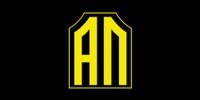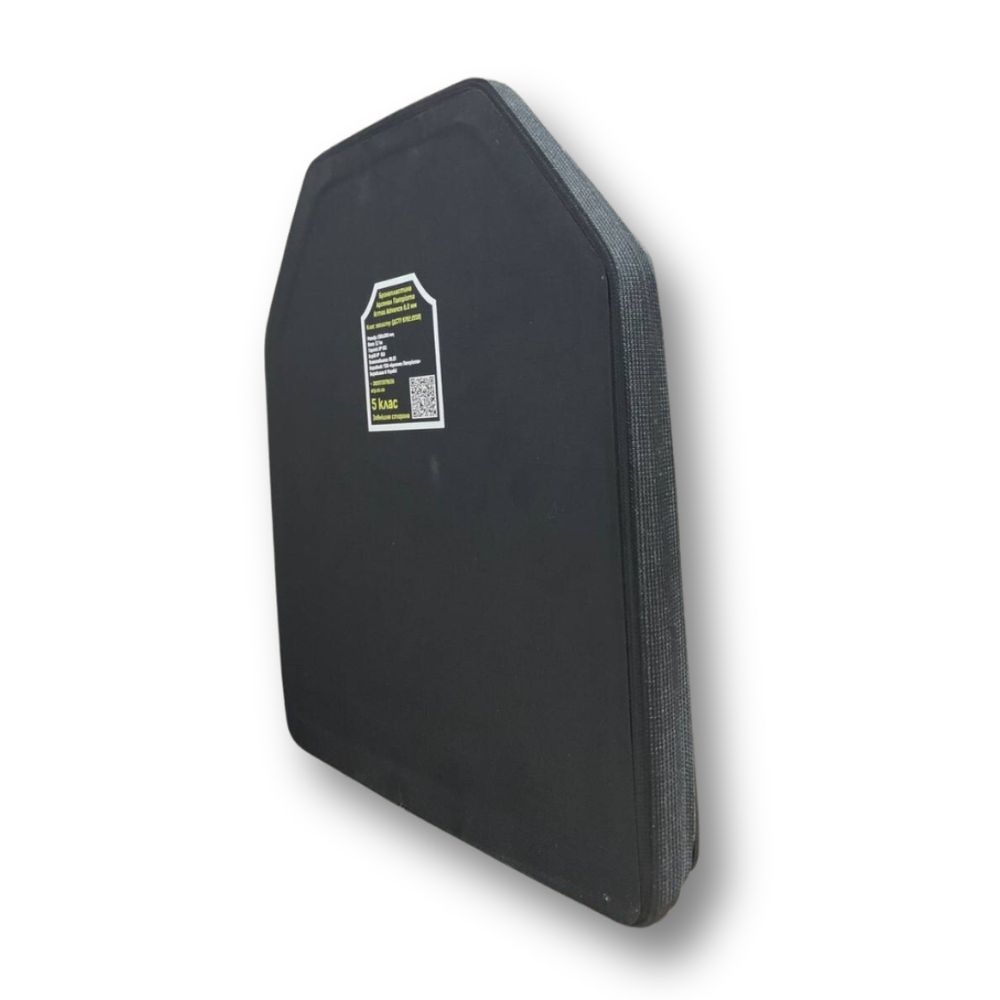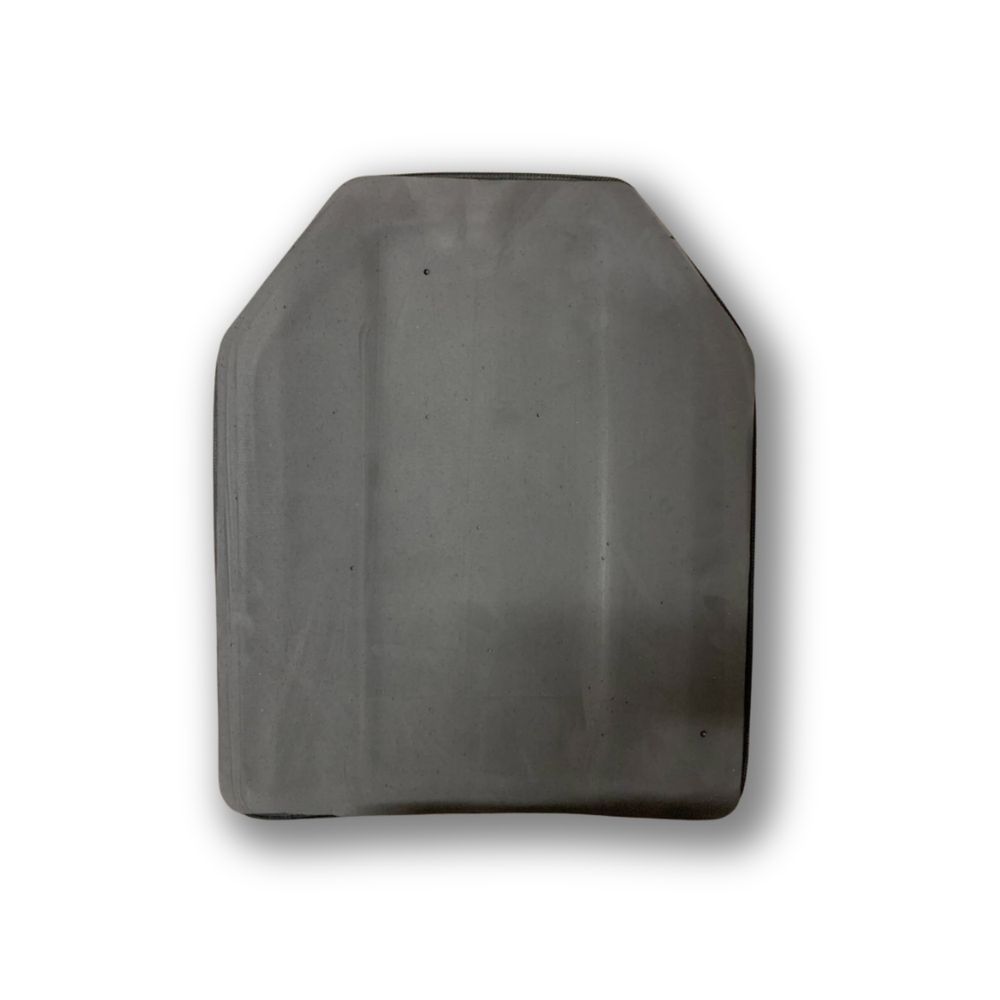5 level "ultra light" armor plate
Peculiarities
5 level "ultra light" armor plate provides maximal protection with 3.8 kg of armor steel. It is suitable for those who are under a sniper threat and those who do not need to move a lot.
Armor Steel
The Armox Advance armor steel used for these plates is from the best manufacturer in the world - the Swedish SSAB with hardness of 58-63 HRC and nominal thickness of 6 mm! The correct processing of this steel allowed us to produce plates that meet level 5 of the State Standard of Ukraine.
Anti-fragment capabilities
We use the lightest materials developed by ourselves to counter the ejection of the core and fragments of the bullet shell. The front part of the armor plate is covered with a special Ukrainian-made ballistic felt, which we additionally laminate with a special layer of PVC film to protect the plate from moisture and water. The felt is cut in accordance with the exact plate dimensions and applied under a special method of several-hour pressing. This allows the coating to firmly adhere to the plate and not fly away even after 6 shots.
But that's not all. We are always moving forward, that's why we added our unique development – side facing - to our plates. This material has density of 800 kg/m3! We press each plate with facings in a special device, where we leave it for an hour and a half. This method ensures that the felt adheres to the metal and makes them work as one, making it nearly impossible for the core to fly out from the side when hitting the edge of our armor plate.
Reducing the blunt force trauma
On the back of every plate, we install a softening damper made of EVA material that is 8 mm thick and has density of 80 kg/m3. Unlike a standard damper made of foamed polyethylene or rubber with density of 30-35 kg/m3, our damper almost does not deform over time and shows better results in reducing the blunt force trauma.
5 level "ultra light" armor plates have no backface deformation.
Form and dimensions
An armor plate has standard dimensions of 25х30 cm. The cut angles do not prevent movement and enable you to use firearms in a comfortable way.
State Standard of Ukraine, certificates and tests
Каждая наша пластина относится к определенной партии, имеет свой уникальный номер и дату производства. Каждая партия бронелистов передается в сертифицированную лабораторию, где они проверяются на соответствие ГОСТ 8782:2018 в нормальных условиях. По результатам испытаний выдается сертификат на партию сроком на 6 месяцев. К каждому сертификату прилагается протокол испытаний. Эти документы можно найти на веб-странице каждого продукта.
Согласно Госстандарту Украины, каждый «сверхлегкий» бронелист 5-го уровня может сохранять:
-
Снайперская винтовка Драгунова, 7,62-мм винтовочный патрон 57-Н-323с (легкая пуля со стальным сердечником) в стальной оболочке со стальным сердечником
-
Скорость пули 850+/-15 м/с.
-
АКМ 7,62х39, пуля 57-БЗ-231 (бронебойно-зажигательная) в стальной оболочке со стальным термообработанным сердечником, скорость пули 745+/-15 м/с.
*С 1989 года без изменения внешнего вида и маркировки вместо легкого шара со стальным сердечником выпускается патрон с пулей СТ-М2 с твердостью сердечника 65HRC, аналогичный пуле Б-32 6-го уровня.
Дополнительно он может сохранить следующее:
- АК-74, патрон 5,45 мм, пуля 7Н22.
- АК-74, патрон 5,45 мм, пуля 7Н6М.
Отличие от керамических тарелок
У любой керамической тарелки есть два недостатка :
-
Он одноразовый и требует замены сразу после первого укола. Именно это и происходит в мировой практике. У каждого бойца всегда есть запасные керамические пластины. Пластины из броневой стали выдерживают несколько выстрелов и не требуют немедленной замены.
-
Деформация задней поверхности керамической пластины намного больше, чем у пластины из броневой стали. Использование керамики без бронежилета с упаковкой, скорее всего, приведет к серьезной травме тупым предметом, которая приведет к перелому ребра или даже повреждению внутренних органов. Пластины из броневой стали не имеют такой деформации тыльной стороны и передают энергию пули по всей пластине, а не по определенной точке. Следовательно, они имеют лучшие показатели снижения травматизма.




























